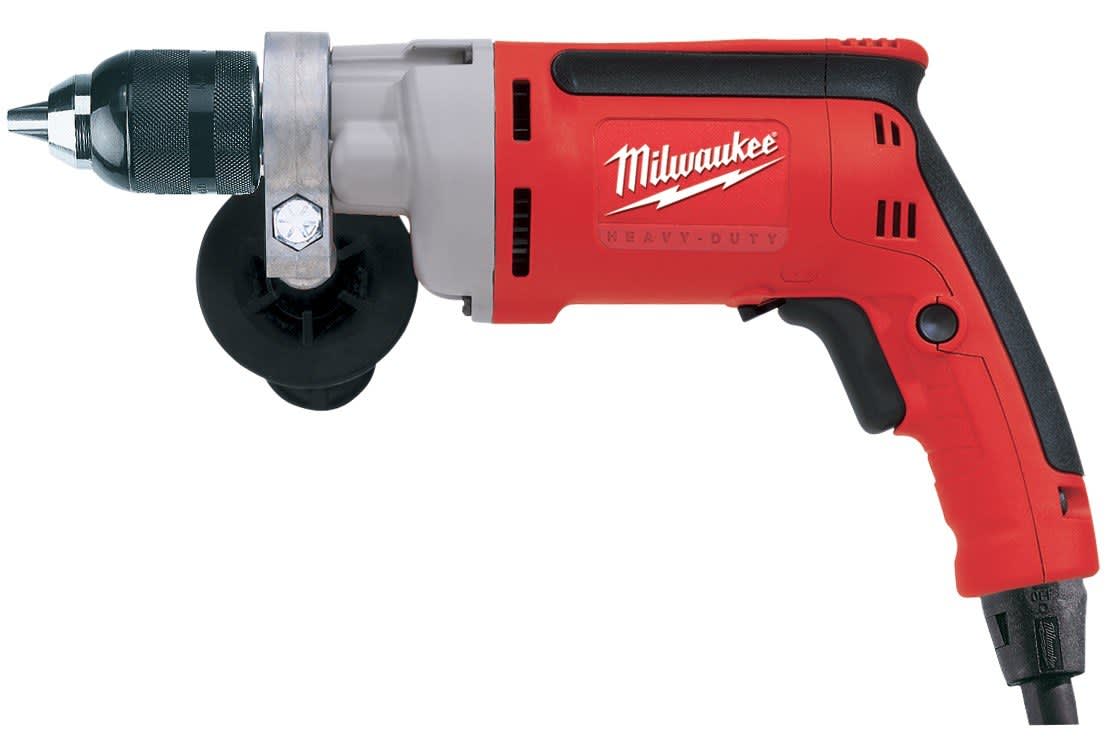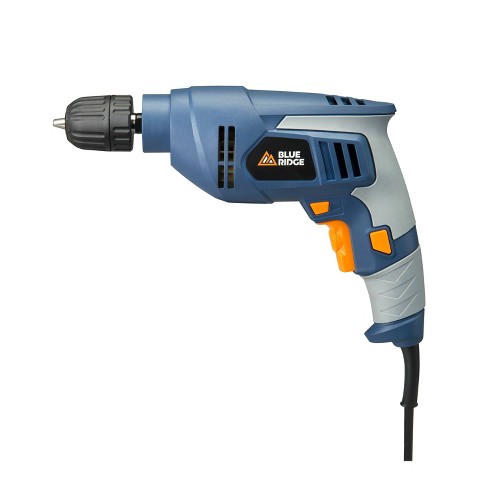Are you curious about power drills and how much power they consume? Well, you’ve come to the right place! Today, we’re going to delve into the fascinating world of power drills and explore the question, “How many amps does a power drill use?” So, buckle up and get ready to uncover the electrifying details!
When it comes to power tools, knowing the amperage of a drill is crucial for both safety and performance. Understanding how many amps a power drill uses can help you determine if it’s compatible with your electrical circuit and ensure you have the appropriate power supply. Whether you’re a DIY enthusiast or just want to learn something new, let’s dive into the world of power drill amperage.
So, without further ado, let’s explore the question, “How many amps does a power drill use?” and shed some light on this electrifying topic. Join us as we unravel the mysteries of power drill amperage and discover the perfect balance between power and functionality. Let’s jump right in and explore the world of power tools together!
How Many Amps Does a Power Drill Use?
Power drills are essential tools for various home improvement and construction projects. If you’re a DIY enthusiast or a professional, you may have wondered about the electrical requirements of your power drill. Understanding how many amps a power drill uses is important for selecting the right power source and ensuring efficient and safe operation. In this article, we’ll delve into the topic of power drill amperage and provide you with all the information you need.
The Basics of Power Drill Amperage
When it comes to power tools like drills, amperage refers to the amount of electric current flowing through the tool during operation. It is a measure of the power consumed by the drill and provides an indication of the tool’s performance and electrical requirements. The amperage rating of a power drill can be found on the tool’s label or in the user manual. It is typically represented by the symbol ‘A’ and a numerical value.
The amperage required by a power drill can vary depending on factors such as the drill’s motor power, the type of work being performed, and the voltage of the power source. It is important to check the amperage rating before using the drill to ensure compatibility with the available power outlets and circuits. Using an improper power source can result in reduced performance, overheating of the drill, or even damage to the tool or electrical system.
Understanding Amps and Voltage
Amps and voltage are two important electrical measurements that are closely related. While amperage represents the amount of current flowing through a tool, voltage refers to the force that drives the current. In simple terms, amperage measures the quantity of electricity being used, while voltage measures the pressure or intensity of that electricity. Power drills typically operate at common household voltages, such as 110-120V or 220-240V, depending on the region.
When considering the amperage of a power drill, it is crucial to ensure that the voltage of the power source matches that of the drill. Using a power source with a lower voltage can result in the drill not receiving enough power to operate optimally. On the other hand, using a power source with a higher voltage can cause excessive current flow, leading to overheating or damage to the drill. Always check the voltage requirements of your power drill and ensure a proper match with the available power supply.
Additionally, it’s essential to consider the capacity of the electrical circuit or outlet you plan to use with your power drill. Different circuits have different amperage ratings, and exceeding the maximum amperage can trip the circuit breaker or blow a fuse. It’s important to match the amperage requirements of your power drill with the capacity of the circuit to ensure safe and uninterrupted operation.
Factors Affecting Power Drill Amperage
The amperage required by a power drill can be influenced by several factors. One of the key factors is the power or wattage of the drill’s motor. More powerful motors generally require higher amperage to operate efficiently. Additionally, the type of work being performed with the drill can also affect the amperage. Drilling through hard materials or using the drill for extended periods may require more power and, consequently, higher amperage.
Another factor to consider is the drill’s speed settings. Some power drills have variable speed settings that allow the user to adjust the rotational speed of the drill bit. Higher speed settings may require more power and higher amperage to achieve the desired drilling performance. It’s recommended to consult the drill’s user manual or manufacturer’s specifications for detailed information on amperage requirements based on different operating conditions.
Finally, it’s important to note that cordless power drills, which are powered by rechargeable batteries, do not draw amperage from the power source. Instead, they rely on the capacity of the battery to deliver the necessary power. Cordless drills typically have a voltage rating rather than an amperage rating. However, when charging the battery, it’s important to use a charger that matches the voltage requirements of the drill to avoid damage to the battery or charger.
Choosing the Right Power Source for Your Power Drill
Now that you understand the importance of amperage and voltage in power drills, let’s explore how to choose the right power source for your drill. Here are a few key considerations:
1. Check Power Ratings
Before using a power drill, always check the power ratings on the tool’s label or in the user manual. This will provide you with information about the required amperage and voltage. Ensure that the power source you plan to use matches these requirements.
2. Use the Correct Outlet
Make sure to use the appropriate outlet for your power drill. If the drill requires a higher voltage, ensure that the outlet can provide that voltage. It’s also important to use outlets that are grounded and in good condition to prevent electrical accidents.
3. Consider Extension Cords
If you need to use an extension cord with your power drill, make sure it is properly rated to handle the amperage and voltage requirements of the tool. Using an undersized or low-quality extension cord can result in voltage drops and reduced performance.
Conclusion:
Understanding the amperage requirements of your power drill is essential for ensuring safe and efficient operation. By considering factors such as the drill’s motor power, voltage requirements, and operating conditions, you can choose the right power source and enjoy optimal performance from your tool. Remember to always consult the drill’s user manual or manufacturer’s specifications for detailed information on the specific amperage requirements of your power drill. With the right power source and proper electrical setup, you’ll be ready to tackle any project with ease.
Key Takeaways: How Many Amps Does a Power Drill Use?
- A power drill typically uses around 2 to 15 amps of current.
- The amperage requirement depends on the size of the drill and the type of work it is intended for.
- Smaller drills for light tasks usually require 2 to 5 amps, while larger drills for heavy-duty work may need 10 to 15 amps.
- It is important to match the amperage rating of the drill with a compatible power source to avoid overheating or tripping circuit breakers.
- Always refer to the manufacturer’s specifications or consult an electrician for precise amperage requirements for your power drill.
Frequently Asked Questions
Welcome to our FAQ section where we will answer some common questions about power drills and their amperage usage. If you’ve ever wondered about the electrical requirements of power drills, you’ve come to the right place! Read on to find out more.
What is the average amperage of a typical power drill?
The average amperage of a typical power drill ranges from 3 to 10 amps. However, it’s important to note that the amperage rating can vary depending on the specific model and brand. Higher amperage drills are often more powerful and suitable for heavy-duty tasks, while lower amperage drills are better for lighter tasks or DIY projects.
When choosing a power drill, it’s important to consider the type of tasks you’ll be performing. If you’ll be working on simple household projects, a drill with a lower amperage will suffice. However, if you’re working on renovations or professional tasks, choosing a drill with a higher amperage will provide more power and efficiency.
Can I use a power drill with a lower amperage rating for heavy-duty tasks?
While it’s possible to use a power drill with a lower amperage rating for heavy-duty tasks, it’s generally not recommended. Using a lower amperage drill for tasks it’s not designed for can put undue stress on the motor, leading to reduced performance and potential damage.
To avoid potential issues, it’s best to invest in a power drill with an amperage rating suitable for the tasks you frequently perform. A higher amperage drill will have the necessary power to handle heavier loads and provide better overall performance and longevity.
Can the amperage of a power drill affect its weight?
Yes, the amperage of a power drill can affect its weight. Generally, drills with higher amperage tend to be heavier due to the larger motor required to handle the increased power output. This weight difference may not be significant for occasional use or light tasks, but it can become noticeable if you frequently use a heavy-duty drill for extended periods.
If weight is a concern, you may consider opting for a lower amperage drill, which tends to be lighter and more maneuverable. However, keep in mind that this may come at the expense of power and the ability to handle more demanding tasks.
Does higher amperage translate to more drilling power?
Higher amperage can often translate to more drilling power. A drill with a higher amperage rating will generally have a more powerful motor, allowing it to handle tougher materials and perform more demanding tasks with ease. This extra power can make a significant difference, especially when drilling through hard surfaces such as concrete or metal.
However, it’s worth noting that drilling power is not solely determined by amperage. Other factors, such as the drill’s design, speed settings, and torque, also play a crucial role in determining its overall performance. It’s essential to choose a drill that balances amperage with these other characteristics to ensure optimal drilling power for your specific needs.
Can using a power drill with high amperage overload my electrical circuit?
Using a power drill with high amperage can potentially overload your electrical circuit, especially if you’re using other high-powered devices on the same circuit simultaneously. When operating power tools with higher amperage, it’s crucial to ensure that your electrical circuit can handle the load.
If you frequently use power tools with high amperage, it might be beneficial to have a dedicated circuit specifically for these devices. Consulting with a licensed electrician can help you determine if your electrical setup can accommodate the power requirements of your tools and prevent any potential issues.

Summary
So, to summarize, the number of amps a power drill uses depends on its size and power. Smaller drills typically use around 2 to 5 amps, while larger, more powerful drills can use up to 10 amps or more. It’s important to check the label or manual to know the specific amp rating for your drill.
In addition, it’s essential to use the right extension cord with the appropriate amp rating for your drill. Using an extension cord with too low of an amp rating can cause the drill to overheat or even damage the motor. Remember to always prioritize safety and follow the manufacturer’s guidelines when using power tools.
